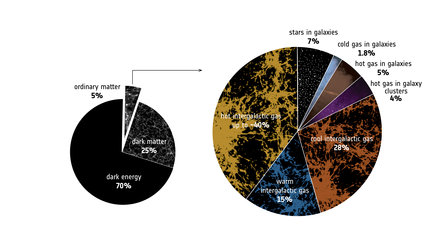Accept all cookies Accept only essential cookies See our Cookie Notice

About ESA
The European Space Agency (ESA) is Europe’s gateway to space. Its mission is to shape the development of Europe’s space capability and ensure that investment in space continues to deliver benefits to the citizens of Europe and the world.
Highlights
ESA - United space in Europe
This is ESA ESA facts Member States & Cooperating States Funding Director General Top management For Member State Delegations European vision European Space Policy ESA & EU Space Councils Responsibility & Sustainability Annual Report Calendar of meetings Corporate newsEstablishments & sites
ESA Headquarters ESA ESTEC ESA ESOC ESA ESRIN ESA EAC ESA ESAC Europe's Spaceport ESA ESEC ESA ECSAT Brussels Office Washington OfficeWorking with ESA
Business with ESA ESA Commercialisation Gateway Law at ESA Careers Cyber resilience at ESA IT at ESA Newsroom Partnerships Merchandising Licence Education Open Space Innovation Platform Integrity and Reporting Administrative Tribunal Health and SafetyMore about ESA
History ESA Historical Archives Exhibitions Publications Art & Culture ESA Merchandise Kids Diversity ESA Brand Centre ESA ChampionsLatest
Space in Member States
Find out more about space activities in our 23 Member States, and understand how ESA works together with their national agencies, institutions and organisations.
Science & Exploration
Exploring our Solar System and unlocking the secrets of the Universe
Go to topicAstronauts
Missions
Juice Euclid Webb Solar Orbiter BepiColombo Gaia ExoMars Cheops Exoplanet missions More missionsActivities
International Space Station Orion service module Gateway Concordia Caves & Pangaea BenefitsLatest
Space Safety
Protecting life and infrastructure on Earth and in orbit
Go to topicAsteroids
Asteroids and Planetary Defence Asteroid danger explained Flyeye telescope: asteroid detection Hera mission: asteroid deflection Near-Earth Object Coordination CentreSpace junk
About space debris Space debris by the numbers Space Environment Report In space refuelling, refurbishing and removingSafety from space
Clean Space ecodesign Zero Debris Technologies Space for Earth Supporting Sustainable DevelopmentApplications
Using space to benefit citizens and meet future challenges on Earth
Go to topicObserving the Earth
Observing the Earth Future EO Copernicus Meteorology Space for our climate Satellite missionsCommercialisation
ESA Commercialisation Gateway Open Space Innovation Platform Business Incubation ESA Space SolutionsEnabling & Support
Making space accessible and developing the technologies for the future
Go to topicBuilding missions
Space Engineering and Technology Test centre Laboratories Concurrent Design Facility Preparing for the future Shaping the Future Discovery and Preparation Advanced Concepts TeamSpace transportation
Space Transportation Ariane Vega Space Rider Future space transportation Boost! Europe's Spaceport Launches from Europe's Spaceport from 2012Latest

Detecting the warm-hot intergalactic medium
Thank you for liking
You have already liked this page, you can only like it once!
Artist’s impression of the warm-hot intergalactic medium, a mixture of gas with temperatures ranging from hundreds of thousands of degrees (warm) to millions of degrees (hot) that permeated the Universe in a filamentary cosmic web.
After two decades of observations, astronomers using ESA’s XMM-Newton space observatory (represented in the lower right) have detected the hot component of this intergalactic material, closing the gap in the overall budget of ‘normal’ matter in the cosmos.
The discovery was made using observations of a distant quasar – a massive galaxy with a supermassive black hole at its centre that is actively devouring matter and shining brightly from X-rays to radio waves (shown at the upper left). The astronomers observed this quasar, whose light takes more than four billion years to reach us, for a total of 18 days, split between 2015 and 2017, in the longest X-ray observation ever performed of such a source.
Having combed through the data, the team found the signature of oxygen in the hot intergalactic gas between the observatory and the distant quasar, at two different locations along the line of sight (shown in the spectrum in the lower left).
The two concentrations of intergalactic gas correspond to redshift z=0.43 (indicated with green arrows) and z=0.35 (indicated with a magenta arrow); the features in the spectrum indicated with blue arrows represent signatures of nitrogen in our Milky Way galaxy.
A non-annotated version of this graphic is also available.
-
CREDIT
Illustrations and composition: ESA / ATG medialab; data: ESA / XMM-Newton / F. Nicastro et al. 2018; cosmological simulation: R. Cen -
LICENCE
ESA Standard Licence

Detecting the warm-hot intergalactic medium

Science at ESA

The cosmic budget of ‘ordinary’ matter

XMM-Newton celebrates 25 years in space















 Germany
Germany
 Austria
Austria
 Belgium
Belgium
 Denmark
Denmark
 Spain
Spain
 Estonia
Estonia
 Finland
Finland
 France
France
 Greece
Greece
 Hungary
Hungary
 Ireland
Ireland
 Italy
Italy
 Luxembourg
Luxembourg
 Norway
Norway
 The Netherlands
The Netherlands
 Poland
Poland
 Portugal
Portugal
 Czechia
Czechia
 Romania
Romania
 United Kingdom
United Kingdom
 Slovenia
Slovenia
 Sweden
Sweden
 Switzerland
Switzerland
























